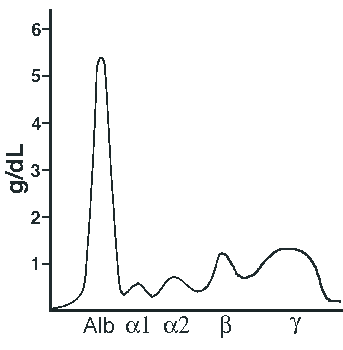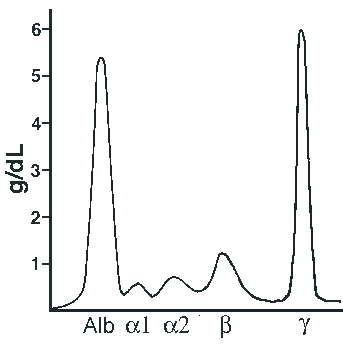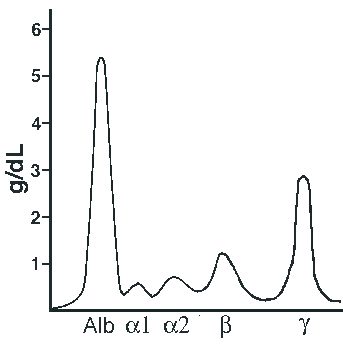Testing for serum proteins can be accomplished by performing serum protein electrophoresis (SPEP) or urine protein electrophoresis (UPEP). The appearance of a normal SPEP is shown below, with fractions of albumin, alpha-1, alpha-2, beta, and gamma globulins:

The normal immune response to inflammation and infection is production of many types of gamma globulins from multiple clones of B-cells stimulated by multiple antigens. A typical SPEP of a polyglonal gammopathy is shown below:

Neoplastic proliferations are monoclonal and, thus, a malignant proliferation of differentiated B-cells resembling plasma cells produces a monoclonal ("M") spike of gamma globulin, characteristic for multiple myeloma, as shown below:

The typical gel electrophoresis pattern, from which the densitometry tracings on this page are made, is shown below comparing normal with a multiple myeloma patient:

There are, unfortunately, "in-between" situations in which a small "M" spike is present (<3 g/dL), without a significant proliferation of abnormal plasma cells, without skeletal lesions, and without Bence-Jones proteinuria. This is the most common form of gammopathy, seen in a few % of older persons, and 20% will go on to myeloma if the affected person lives for another 1 or more decades. The appearance of this monoclonal gammopathy of uncertain significance (MGUS) is shown below:



